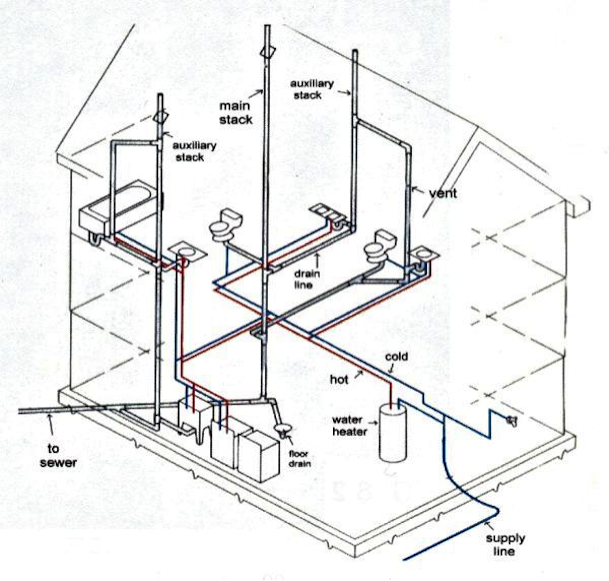Plumbing is an essential aspect of every household that often goes unnoticed, until a problem arises. Whether it is a minor leak or a major plumbing crisis, navigating these common issues can be a daunting task. However, with the right knowledge and a calm approach, you can tackle plumbing problems with ease. In this plumbing guide, we will explore some of the most common pitfalls that homeowners encounter and equip you with the information and tips you need to overcome them. So, if you’re ready to become a plumbing pro, let’s dive in!
Preventing Clogged Drains
- Be Mindful of What Goes Down the Drain
To prevent clogged drains, it’s important to be mindful of what you allow to go down the drain. Avoid letting food scraps, grease, or coffee grounds go down the kitchen sink. These substances can easily accumulate and cause blockages in the plumbing system over time. In the bathroom, make sure to dispose of hair, soap scum, and other debris in a trash can instead of allowing them to go down the drain.
- Use Drain Covers
Investing in drain covers for your sinks, showers, and tubs can be a simple yet effective way to prevent clogs. These covers act as a barrier, catching hair, small objects, and other debris that could otherwise go down the drain. Regularly cleaning the drain covers and removing any trapped materials can help ensure proper drainage and prevent clogs from forming.
- Regularly Clean and Maintain Your Drains
Regular maintenance is crucial in preventing clogged drains. One easy way to keep your drains clean is by flushing them with hot water on a weekly basis. This helps remove any debris or buildup that may be accumulating in the pipes. Alternatively, you can mix a cup of baking soda with a cup of vinegar and pour it down the drain, followed by hot water. This natural solution can help break down any organic matter that might be causing clogs.
Remember, by being mindful of what goes down the drain, using drain covers, and regularly cleaning and maintaining your drains, you can avoid many common plumbing issues and keep your plumbing system running smoothly.
Fixing Leaky Faucets
Leaky faucets can be a common plumbing issue that many homeowners face. Not only can they be annoying with the constant drip-drip sound, but they can also waste a significant amount of water over time. Fortunately, fixing leaky faucets is often a simple task that you can tackle on your own.
The first step in fixing a leaky faucet is to determine the source of the leak. Start by closing the water supply valve to the faucet. This is usually located underneath the sink or near the water meter. Once the water supply is turned off, examine the faucet carefully to find where the leak is originating from.
In many cases, a leaky faucet is caused by a worn-out or faulty washer. To replace the washer, you will need to disassemble the faucet handle. Use a screwdriver or an Allen wrench (depending on the type of faucet) to remove the handle. Once the handle is off, you can access the washer. Remove the old washer and replace it with a new, matching one.
Once you have replaced the washer, reassemble the faucet handle and turn on the water supply valve. Slowly open the faucet to check if the leak has been fixed. If the faucet is still leaking, there may be other underlying issues such as a damaged valve seat or cartridge, which may require professional help to repair.
By following these simple steps, you can save water and eliminate the annoyance of a leaky faucet. Remember, regular maintenance and timely repairs can help you avoid potential plumbing pitfalls and keep your plumbing system in good working condition.
Dealing with Toilet Troubles
Toilets are an essential part of any plumbing system, and when they encounter problems, it can be quite inconvenient. Fortunately, many common toilet issues can be resolved with a few simple steps. In this section, we will explore some common toilet troubles and provide you with helpful solutions to navigate them with ease.
-
Clogged Toilet: One of the most common issues homeowners face is a clogged toilet. When faced with this problem, it’s important not to panic. In most cases, a plunger can come to your rescue. Simply place the plunger over the drain hole at the bottom of the toilet bowl and push down firmly, then pull up sharply. Repeat this process a few times until the water starts to drain. If the clog persists, you may need to use a toilet auger or call a professional plumber for assistance.
-
Running Toilet: A running toilet is not only annoying but can also waste a significant amount of water. If you notice that your toilet continues to run even after flushing, there are a few things you can check. Start by inspecting the flapper, which is a rubber seal that controls the flow of water from the tank to the bowl. Ensure that the flapper is properly aligned and not damaged. Additionally, check the fill valve and adjust it if necessary. If these steps don’t solve the issue, it might be a good idea to replace these components or seek the help of a professional plumber.
-
Weak Flush: Is your toilet not flushing properly? This can be caused by a variety of reasons, such as a low water level in the tank or an issue with the flapper or flush valve. Check the water level in the tank and adjust it if needed. You can also inspect the flapper and flush valve to ensure they are working correctly. If adjusting the water level or fixing these components doesn’t resolve the problem, it might be time to call a professional to diagnose and fix the issue.

By being aware of these common toilet troubles and their respective solutions, you’ll be better equipped to handle any plumbing issues that may arise. Remember, if you’re unsure about tackling the problem yourself, it’s always a wise decision to seek the assistance of a qualified plumber for a swift and effective resolution.
